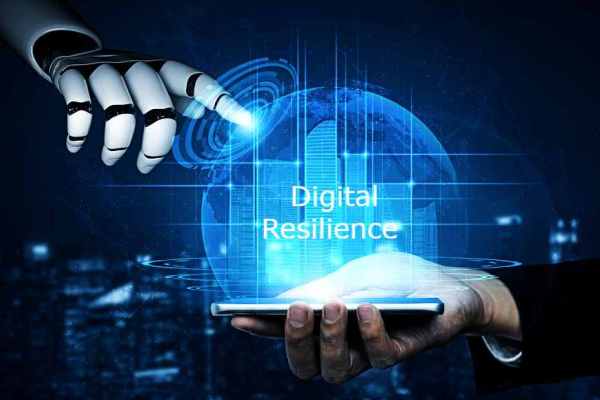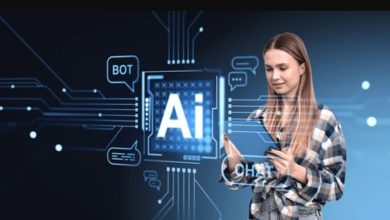Building Digital Resilience in Today’s AI-First Era
AI Is Evolving, and So Is the Complexity Involved in Dealing with It

Digital resilience is needed now more than ever.
In 2025, Artificial Intelligence (AI) will remain a driving force in enterprise IT transformation, with businesses across sectors racing to unlock its full potential. In ASEAN, the digital economy is projected to expand from approximately USD $300 billion to nearly USD $1 trillion by 2030—a trajectory that will only accelerate as AI becomes more deeply embedded in everyday business operations.
But as AI capabilities evolve—from generative to predictive models to autonomous and agentic systems— so too does the complexity of integration and scalability. Staying competitive in this AI-first era demands more than innovation; it requires digital resilience, ensuring AI systems are reliable, adaptive, and responsive in a volatile environment.
Many businesses are not where they need to be. Infrastructure readiness to support AI initiatives is low, with just 15% of businesses in Asia Pacific, Japan, and China (APJC) prepared to harness AI’s full potential. In fact, 82% continue to grapple with fragmented data systems, hindering their ability to centralise and access critical data across organisations.
Digital resilience requires more than just AI models. It calls for an underlying, AI-ready architecture platform capable of real-time data integration and distribution. Without this foundation, businesses risk fragmentation, latency, and limited adaptability to shifting market dynamics.
The New Demands of Agentic AI
Today’s AI is no longer static or standalone. Agentic AI systems, unlike earlier generative tools, are dynamic, distributed, and inherently intertwined with real-time data to deliver meaningful outcomes. Whether powering a customer service agent, optimising supply chain logistics, or detecting fraud, these agentic AI systems thrive on continuous streams of event-driven data to make instant, context-aware decisions.
Their effectiveness hinges on connected data. Without it, AI agents struggle to grasp the full context or user intent, leading to inaccurate responses and missed opportunities. However, many organisations continue to struggle with fragmented data architectures, unable to liberate the critical insights that are trapped in silos across departments or systems. This lack of cohesion leads to latency, bottlenecks, and inconsistent performance, undermining the responsiveness and reliability of AI applications.
Many organisations face this reality today. 81% of enterprise IT leaders in Asia Pacific (APAC) say data integration is one of the biggest challenges to realising AI’s full potential. Without a unified, real-time approach to data integration and distribution, even the most sophisticated AI models can fall short of expectations and fail to deliver real business value.
Laying the Foundation for AI Resilience
Event-driven architecture (EDA) provides the backbone of AI-ready systems, helping businesses to overcome integration hurdles and unlock the full potential of AI. Unlike traditional request-response models, where workflows are rigid and predefined, an EDA platform enables systems to detect, process, and respond to real-time events the moment they occur—whether it’s a point-of-sale transaction, a shipment delay, or a customer inquiry.
The First Layer: The Event Mesh as the Digital Nervous System
At the core of EDA lies the event mesh, a network of interconnected event brokers designed to seamlessly stream and filter event-driven data in real-time across various systems, clouds, or protocols. By ensuring the seamless liberation of data flow between previously siloed systems, the event mesh dramatically reduces latency and fuels AI models with the timely, contextual information they need to make accurate decisions at speed and scale.
In logistics, this could mean rerouting shipments based on live traffic updates, while in financial services, it could mean flagging suspicious transactions the moment they occur. By enabling this real-time responsiveness, the event mesh gives AI the agility and context to scale intelligently and reliably.
But this is only one part of the resilience equation.
The Other Half: The Agent Mesh as the Intelligence That Acts
True digital resilience requires more than speed; it demands systems that can think, adapt, and act independently. This is where the agent mesh comes in.
The agent mesh is a network of intelligent autonomous agents capable of monitoring these real-time data streams. While an event mesh enables real-time data flow and dynamic routing across the enterprise, an agent mesh takes this further by introducing intelligent agents that can autonomously reason about and act on this information flow.
Think of it as adding a layer of distributed intelligence to your enterprise nervous system. These agents operate either autonomously or with human input, which allows them to engage customers, automate workflows, and detect anomalies, all while maintaining situational awareness through the shared context provided by the mesh.
The Dual Engine of AI and Digital Resilience
Together, the event mesh and agent mesh provide the dual engine of AI and digital resilience. The former enables the speed and fluidity of data movement, while the latter drives intelligent adaptive decision-making. This combination empowers organisations to not only react in real time but also continuously learn, adapt, and respond to change with resilience.
Thriving in an AI-First Future
In an AI-first world, digital resilience is no longer a nice-to-have; it is a strategic imperative. Organisations must build systems that are not only intelligent but also agile, adaptive, and resilient by design.
Artificial Intelligence does not live in isolation, and for most organisations, the challenges they face are 20% AI itself and 80% integration and data. That’s why digital resilience is more than just a tech upgrade, it’s a long-term investment in AI maturity and business continuity.
The organisations that master both AI and digital resilience will be best positioned to thrive in today’s increasingly complex global environment.




